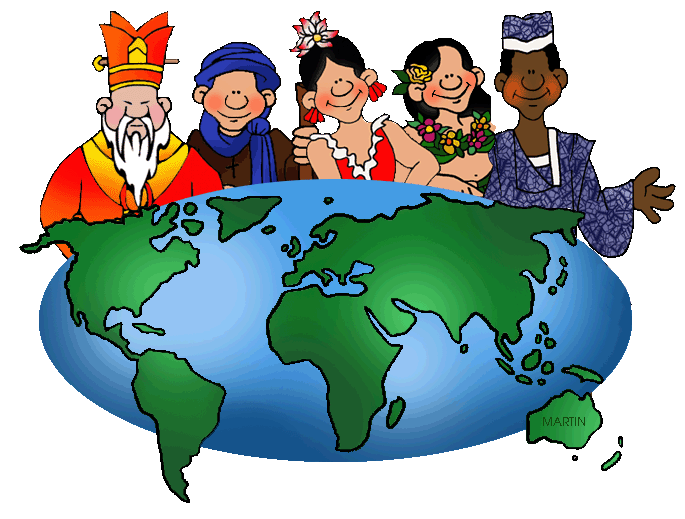Cultural convergence is a phenomenon characterized by the blending of diverse cultural elements, leading to a synthesis of ideas, practices, and symbols. In today’s interconnected world, visual representations, such as clip art, play an influential role in how culture is disseminated and perceived. This article delves into the intricate layers of cultural convergence through the lens of clip art, examining its implications, significance, and the shift in perspective it promises.
Clip art serves as a microcosm of cultural dynamics, effectively illustrating how disparate elements can intermingle to create something new and riveting. By allowing artists and designers to access a repository of images that transcend specific cultural boundaries, clip art fosters an environment where even the most unique and isolated symbols can achieve global recognition. One significant aspect of cultural convergence is the democratization of art, wherein individuals from various backgrounds can participate in the creative process without requiring formal artistic training.
The significance of cultural convergence in clip art cannot be overstated. In many ways, it mirrors broader societal shifts where traditional barriers are dismantled, fostering greater inclusivity. Such inclusivity allows for a more representative portrayal of global culture. For instance, a designer in the United States can incorporate traditional motifs from Indigenous cultures in Australia, creating an artwork that brings together diverse narratives. This cross-pollination of ideas piques curiosity, challenging viewers to contemplate the origins of the elements they are witnessing.
Moreover, cultural convergence through clip art also shifts the audience’s perspective towards broader issues, such as globalization and intercultural dialogue. Clip art can highlight commonalities between cultures while still honoring the uniqueness of each tradition. Take, for example, traditional symbols such as the lotus flower, which appears in various cultures with different meanings. In clip art, the representation of such symbols permits an examination of their significance across cultural boundaries, encouraging a dialogue that promotes understanding.
The visual nature of clip art engages viewers on an emotional level, making it a powerful tool for storytelling. Each image has the potential to encapsulate extensive narratives that represent a historical moment, a cultural belief, or an artistic expression. Consequently, clip art not only serves functional purposes—like enhancing presentations, enriching educational materials, or beautifying social media content—but also invites a deeper exploration of the manifold cultural tales embedded within each graphic.
The concept of cultural convergence extends into the realm of accessibility. Digital platforms that provide clip art resources democratize visual communication. Free repositories of clip art make these tools available to a myriad of users, whether they are professionals crafting compelling marketing materials or everyday individuals creating personalized projects. Such accessibility engenders a sense of collaboration among creators and consumers, allowing for the development of a shared visual language that bridges cultural divides.
Furthermore, clip art is not static. The evolution of design reflects broader cultural trends and societal attitudes. For instance, the emergence of eco-conscious designs within clip art symbolizes increasing awareness of environmental issues. This transition points towards an era where sustainability is not merely an afterthought but woven into the fabric of cultural expression. The popularity of green-themed visuals in clip art underscores a collective yearning for environmental accountability and highlights the role of art in advocating for change.
Looking towards the future, cultural convergence in clip art necessitates vigilance against the commodification of culture, which can dilute the very essence that makes cultural elements distinct. As cultures merge and interact, there lies a responsibility to honor and respect the origins of imagery. Ethical design practices can forge a path that ensures the authentic representation of cultures without exploitation. Artists and designers must remain mindful of the meanings embedded within symbols and tropes and strive to elevate rather than appropriate cultural narratives.
Through multilayered perspectives, the exploration of cultural convergence in clip art reveals the potential to inspire curiosity and ignite dialogue. By embracing the intersectionality of imagery, artists can invoke critical discussions about identity, representation, and the intricate fabric of society. Collaboration among various cultural voices can yield a rich tapestry of ideas, fostering creativity that resonates far beyond geographical confines.
The advent of new technologies further catalyzes cultural convergence in clip art, providing innovative tools for creation and dissemination. Digital media enables artists to experiment with varied techniques, blending traditional methods with contemporary styles. As artistic expression continually evolves, so too does the scope of cultural convergence, which now sees no borders in the digital age.
Ultimately, cultural convergence in clip art encapsulates a collective journey towards understanding, expression, and collaboration. It serves as a testament to the dynamic interplay between cultures, offering a lens through which we can perceive the multitude of narratives coexisting in our world. Through the continued exploration of these artistic representations, curiosity is piqued, perspectives are shifted, and a greater appreciation for the shared human experience emerges.
